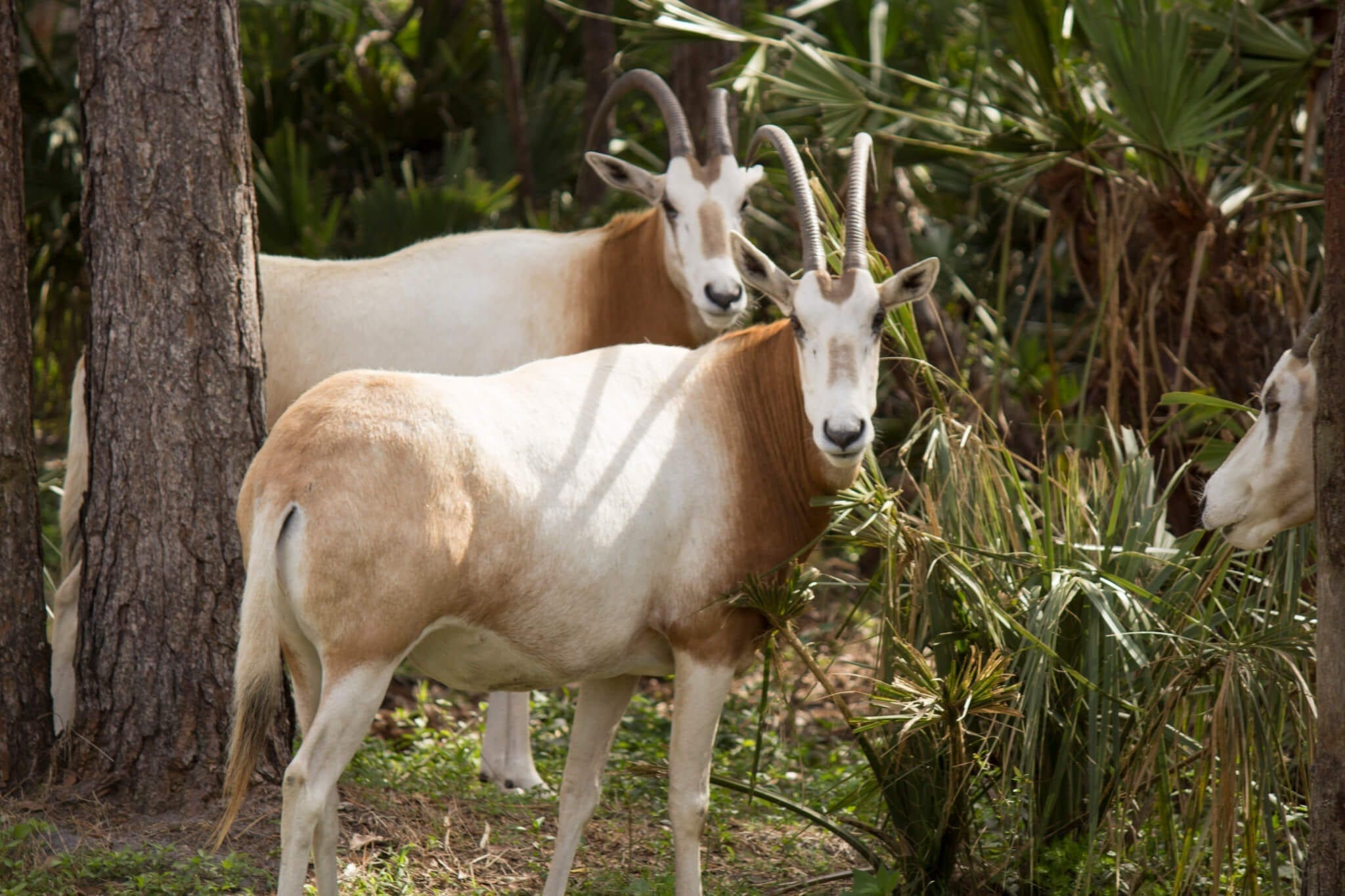

An additional 21 individuals were released into the acclimation enclosure in 2017. In 2000, it was declared extinct in the wild on the IUCN Red List.Ī captive bred group was released into an acclimation enclosure within the Ouadi Rimé-Ouadi Achim Faunal Reserve in 2016, then reintroduced into the wild. The scimitar oryx ( Oryx dammah), also known as the scimitar-horned oryx and the Sahara oryx, is a Oryx species that was once widespread across North Africa. 1990.Osteological specimen of a Scimitar oryx in the Natural Science Research Laboratory's (NSRL) collection at the Museum of Texas Tech University. Baltimore: Johns Hopkins University Press. Vermont: Chelsea Green Publishing Company. Berkeley: University of California Press. The Behavior Guide to African Mammals: Including Hoofed Mammals, Carnivores, Primates.

In a cooperative effort with other AZA (Association of Zoos and Aquariums) institutions, Busch Gardens closely manages scimitar-horned oryx populations through a program called the Species Survival Plan (SSP), which works to improve the genetic diversity of managed animal populations.Įstes, Richard D. In addition, they suffer from habitat destruction and poachers. Oryx numbers have dwindled because farmers shoot them. They also serve as a food source for carnivores such as leopards, lions, birds of prey, and young baboons. As browsers these antelope help keep vegetation from becoming overgrown. While information on oryx is limited, they are important to the habitats where they live. They are mainly active at night and around dusk and dawn.Unfortunately, livestock or crops now occupy most pastures. Reintroduction of oryx in some areas is problematic because they are migratory animals, and move to vast pastures.These animals usually live in herds of 20 to 40 individuals, but have been sighted at herds of 1000.Oryx can go without water for several days, which is a great adaptation for a desert dweller.This may be where the unicorn myths began. Egyptians used to bind the horns of oryx together to make them appear like they had one horn.Scimitar-horned oryx are an important example of how humans can impact animal populations, both negatively and positively. They have white coats that help to reflect the heat of the sun, broad hooves to prevent sinking into sand, and the ability to go for days without drinking, in part because they eat plants high in moisture. Fortunately, this species has been bred in zoos and today small groups have been introduced into northern central Africa. Because of over-hunting, the last wild oryx observed was seen in the late 1980s. Scimitar-horned oryx once inhabited the arid borders of the Sahara desert.Scientific Classification Common Name scimitar-horned oryx Kingdom Animalia Phylum Chordata Class Mammalia Order Artiodactyla Family Bovidae Genus Species Oryx (antelope) dammah (fallow deer)įast Facts Description Medium-sized white antelope with brown neck and collar markings (may seasonal color change to a light brown) long horns curve backward Size Height at shoulder: 0.9 to 1.36 m (3 to 4.5 ft.) Weight 205 kg (451 lbs.) Diet Browser, trees, fruit, shoots, grasses, herbs, and leaves Incubation 8 to 10 months one offspring per birth weighing 9 to 14.8 kg (20 to 33 lbs.) Sexual Maturity 1.5 to 2 years Life Span Up to 20 years Range North Africa Habitat Barren steppes, desert and sub-desert zones Population Global: No data Status IUCN: Extinct in the wild


 0 kommentar(er)
0 kommentar(er)
